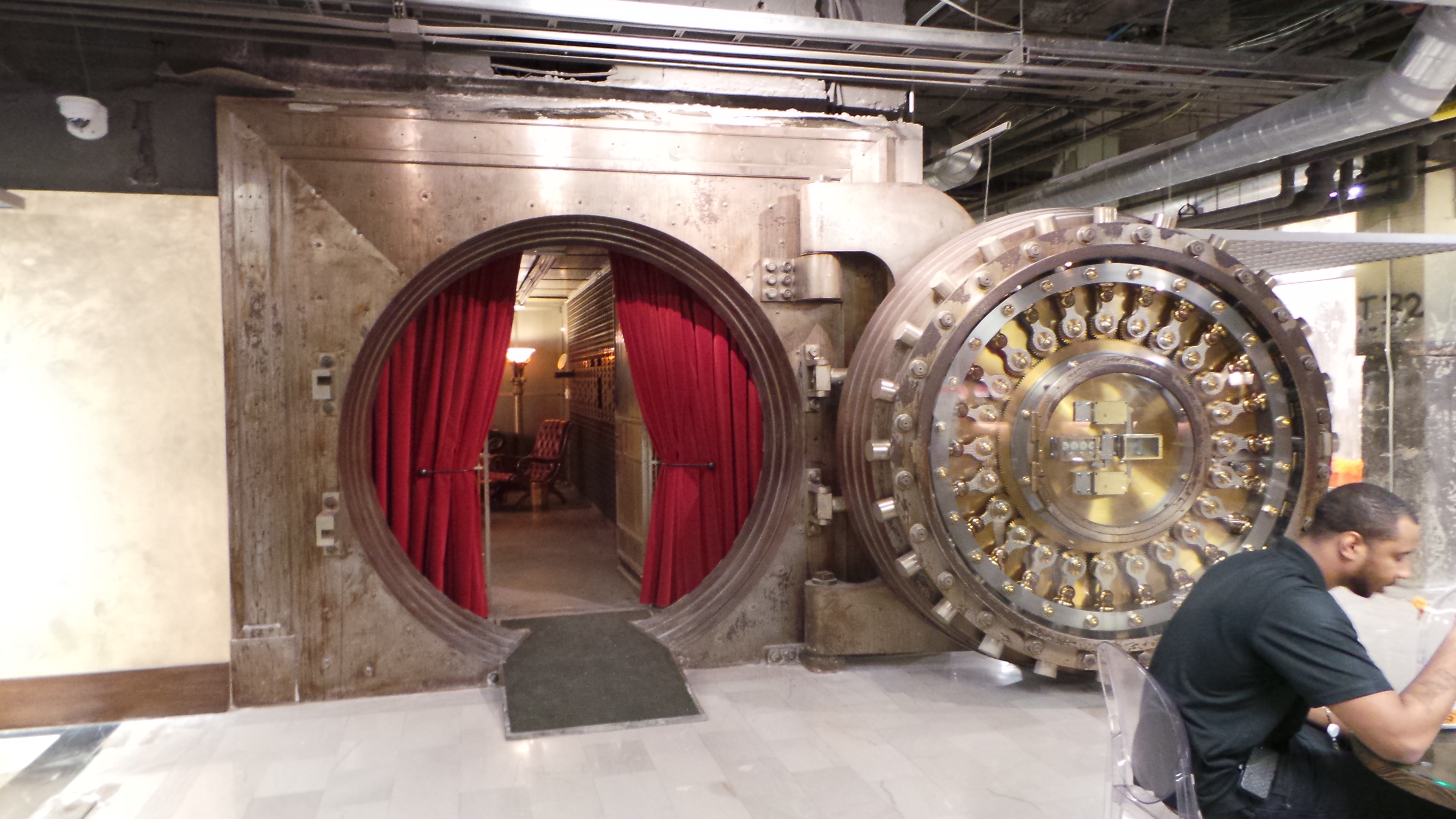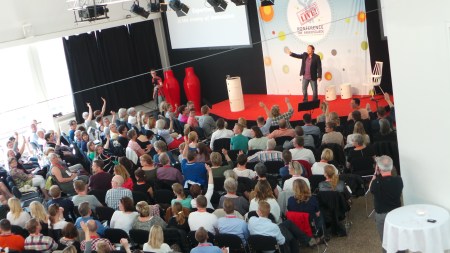
On my speaking tour of New York and Boston last week I had a chance to visit Next Jump and talk to their CEO and founder Charlie Kim and what I saw and heard there just blew me away.
What they’re doing to create a happy workplace is world-leading. Some of what they’re doing is great, some of it is insanely great and one thing they do is almost unheard of and completely revolutionary. Read on to find out what that is.
Next Jump’s business is employee rewards programs. Companies who sign up with them can offer their employees discounts at over 30,000 merchants on everything from groceries, diapers and pet food to cell phones, computers, car rentals and travel bookings. 70% of the Fortune 1000 companies use Next Jump and they cover over 100mm+ users globally.
Their HQ is on 5th avenue in New York and they also have offices in Boston, San Franscisco and London. They have around 200 employees, 75% of whom are highly skilled engineers.
They have a great culture and great results have followed: 90% of Next Jump’s employees say they love their jobs. Not like – love! Employee turnover is essentially 0, which is almost unheard of, since so many of the employees are highly sought after engineers from MIT and other top US east coast universities. They are also profitable AND growing like crazy.

Dance battle. That’s the CEO on the right boogying down.
But why are they so successful and happy? There are many things the company does right. Here’s a small sample:
- There’s a gym where employees can work out. Many companies do and in most cases those gyms lie empty. To actually get people to use the gym, each Next Jump employee belongs to a team, each workout counts towards your team’s weekly score and the winning team earns points. At first only 5% of the employees worked out regularly, in the past 3 years over 80% of the employees have worked out a minimum of twice a week.
- Subsidised vacations means the company will cover half your family’s vacation expenses (up to $5,000). They want you to take your vacations!
- Free food – and they really want you to eat well. the first free meal was breakfast. A healthy lunch was then added as an incentive to those who attend a lunchtime fitness class. Healthy dinners are all around building community through eating together.
- Next Jump is massively into mentorships and coaching and every employee is constantly being encouraged and pushed to grow and develop both professionally and personally.
- Once a year they fly all employees in for a company party. Main feature: The dance-off. And everyone must dance. There’s more here.
- They encourage charitable giving. For instance, after hurricane Sandy, many low-salaried new yorkers couldn’t work and therefore lost out on important salaries. Next Jumpers gave 10% of their paychecks to these “Forgotten Ones” and started handing out envelopes of cash with a note explaining where this money came from. People then reported back with pictures and stories which you can see here.
Now, all of these practices are great and definitely contribute to happiness at work. But wait, there’s more…

Don’t forget the massive slip’n’slide at the summer party.
Here are my 4 favorite things that they do at Next Jump to keep their employees happy.
4: Code for a cause
While giving money to charity is great, Next Jump encourages employees to also give something even more valuable: Their skills. Employees can team up to develop much-needed IT solutions for charities who can’t otherwise afford to pay to have these systems done.
Employees get a true feeling of satisfaction from helping a worthy cause and from directly seeing how their work helps others. Read more about code for a cause here.
3: MV-21
While Next Jump of course has a CEO and a board of directors, it also has something very different. Every year the entire company votes to select a team of 21 leaders called MV-21. For the next year, this group has two responsibilities:
- They are responsible for growing Next Jump’s core business results.
- The group is responsible for leading and developing the company’s culture.
The key thing here is that this group is voted on by the whole company and not hand-picked by the management team. This means that the company is led by people others want to follow.

The MV-21 leadership team.
If you’re wondering, the “MV” stands for Martha’s Vineyard (a vacation island off the coast of Cape Cod, Massachusetts), where one of Next Jump’s investors owns a compound that the company has been using annually for a leadership offsite. The house sleeps 21 and, hence, the tradition of choosing 21 key employees each year was born.
2: Recognise those who help others
Many companies recognise and reward those who do well and top performers are showered with accolades and bonuses. While Next Jump does reward performance, they also reward those who help others do a great job.
Check out this sign which I saw in their reception area:

So “Project Awesome” is not to reward those who are awesome, but those who help others be awesome. Many companies completely ignore those people – at Next Jump they are the heroes.
1: The No Fire Policy
This is the insane one and the reason I heard about Next Jump in the first place.
Charlie Kim, the CEO, had long been a proponent of the “hire slowly, fire quickly” approach but had a change of mind and made the radical decision.
You can read a great interview with Kim about this policy over at David Marquet’s blog but the gist of it is this: Once Next Jump hires you, they will not fire you.
Their commitment to you is total and they will go to any length to make sure that you are happy and productive. This is not soft in any way – there is a lot of tough love at Next Jump and people are constantly pushed to go beyond their limits and learn new things.
There’s only one exception to this rule: If you cheat, lie or behave unethically they will fire you.
You may think that’s a weird idea, but consider these two things. First of all, this works! Next Jump’s staff surveys have shown a direct impact on both employee turnover and happiness. And secondly, this is only possible because of the other processes they have in place, including some very intentional hiring and a massive focus on developing people.
Again, read David Marquet’s excellent blog post for more details on this revolutionary policy.
The upshot
I left the meeting with Charlie Kim completely fired up about meeting a company with such an unwavering commitment to creating a great culture AND with the balls of steel it takes to try so many innovative or even radical ideas.
Your take
What do you think – does Next Jump sound like a good workplace? Is there anything they’re doing, that you’d like to see your workplace adopt? Is there something your workplace does that makes you happy? Write a comment, I’d love to know what you think.
Related articles
 Why NOT have a space suit in your lobby?
Why NOT have a space suit in your lobby? The office is in an old bank vault and the vault doors are still there.
The office is in an old bank vault and the vault doors are still there. Inside the vault is this amazing meeting room.
Inside the vault is this amazing meeting room. This meeting table spins like one of those playground carousels.
This meeting table spins like one of those playground carousels. Besides your desk, there are many other places to meet and work.
Besides your desk, there are many other places to meet and work. Behind which is another meeting room.
Behind which is another meeting room. They’ve kept all the safe deposit boxes, many of which are still locked.
They’ve kept all the safe deposit boxes, many of which are still locked.
 This mural was chiseled into the concrete wall by an artist.
This mural was chiseled into the concrete wall by an artist.



 Just found this great quote from Richard Branson, founder and CEO of Virgin.
Just found this great quote from Richard Branson, founder and CEO of Virgin.













